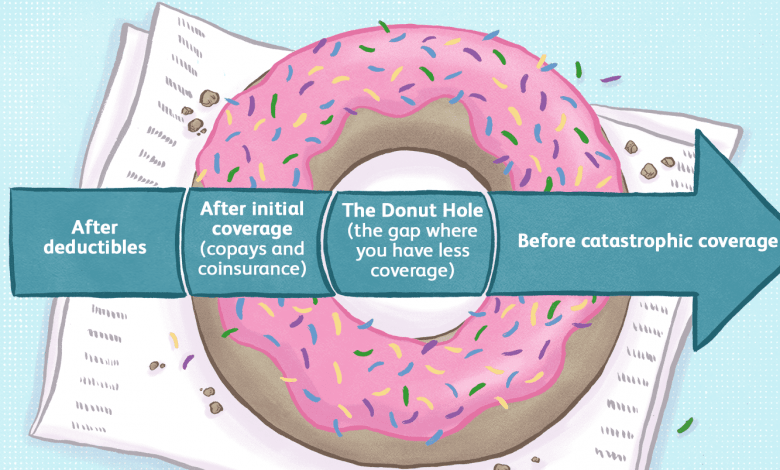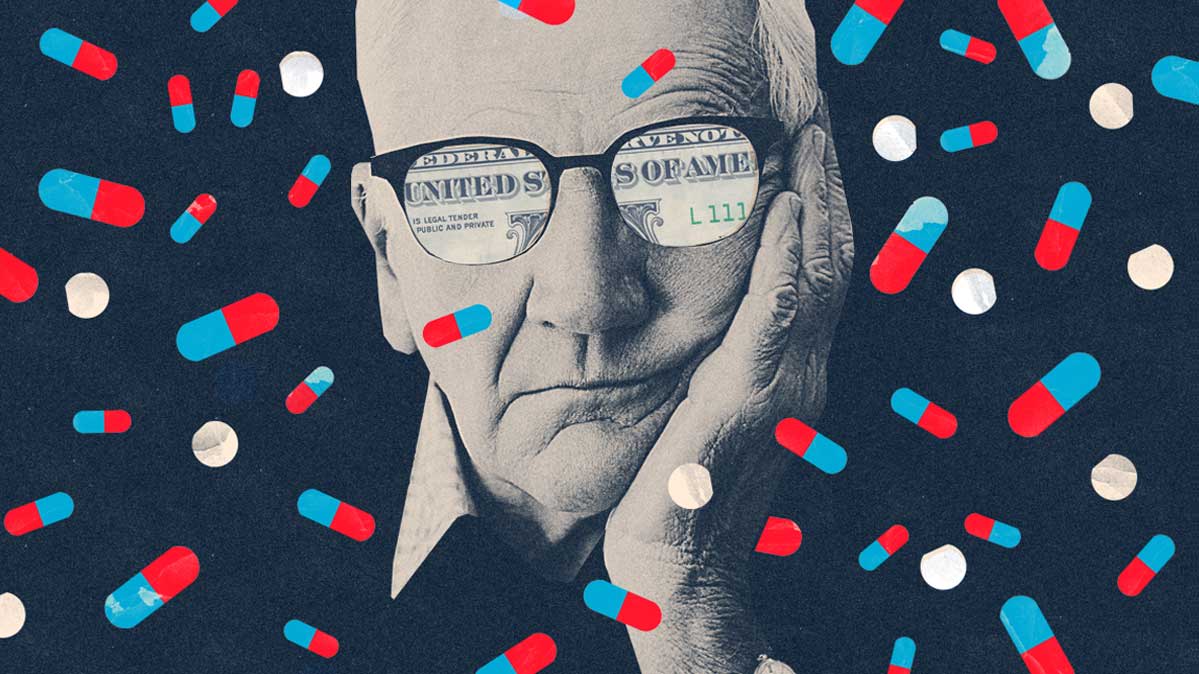Things You Need to Know About Medicare Part D Plans – RX Coverage That Works!

Medicare Part D plans help people get the prescriptions they need, and they must ensure they have an understanding of how the plan functions. Everyone who is on Part D has it because they need the coverage to ensure they are on the proper prescriptions, and they will find it pays for all the drugs they must use. This article explains how users may take advantage of the prescription coverage on Part D.
The Prescriptions
The prescriptions are offered through the plan have been provided by Medicare. They have chosen the prices that are offered to the customers, and they will help the prices stay as low as possible. Someone who is searching for a better price on prescriptions will find it on Part D, and it will often pay for the drug in-full. Someone who does not have the money to pay for a prescription must use Part D because it helps them get the drugs at the pharmacy counter. They may use the coverage when ordering online, and they will see claims go through the system quickly.
Payment In The System
Medicare Part D is the coverage that is checked in the pharmacy when someone shows up, and the staff will learn what is paid for. There are many different people who are looking for particular drugs that they need to be covered, and they will find it simple to use the plan because it is processed over the computer system. Everyone who is searching for a simple way to pay for their prescriptions will need Part D and their insurance card.
The Catalog Of Drugs
Medicare Part D is an insurance system that has a catalog of drugs that users may choose from at all times. There are quite a few people who are searching for certain drugs that have been prescribed by their doctors, and they must go into the pharmacy knowing that it is covered. They may ask the pharmacy to check their coverage, or they may call customer service for the plan to learn what they may order. There are many drugs that must be approved before the user may order them, and they will use their registration number to pay for their prescriptions.
Checking Coverage
Users may call the service at any time to check their coverage, and they will learn quickly what Medicare will pay for. There are overage limits on the service, and the user who is checking on their coverage must ask if they have hit the coverage limit. The limit is quite important as it may prevent people from ordering prescriptions, and they must know for certain how much they are allowed before they have hit their limits.
New Drugs
The catalog is updated every year on Medicare Part D, and someone who is searching for the drugs they need must ensure they are using the drugs that have been prescribed. Their doctors know what is covered under the plan, and they will find it easy to use the catalog when they are planning treatment for their patients. Anyone may use Medicare Part D knowing that they will have coverage, and they will find it simpler to use the plan because it has been laid out by the government to be simple. The finest prescription coverage is from the government in the form of Medicare Part D. The Medicare Part D plan is perfect for those who need their prescriptions, and they will have all the services they need. They may check their coverage, and they may use their coverage at any pharmacy that accepts it.
Premiums You Can Count On
One of the things that people are most curious about when signing up for new healthcare is not about how much the premiums will cost, but whether or not they will stay that way. For senior citizens, it’s especially important to know that there won’t be any expected cost increases moving forward, meaning that it’s essential to find a plan that will help you cover your health without throwing any unexpected changes at you. Medicare Part D’s premiums are very steady, typically only rising as little as a dollar each year. This is to ensure that you feel secure in your new plan and not be caught off-guard!
Is Dual Enrollment in Medicare Plans Possible?
To put it simply, yes! Those who are eligible for Medicare Part D coverage are often eligible to have dual enrollment in Medicare plans. This is because a majority of the population immediately qualifies for Medicare parts A and B, making dual enrollment a near-necessity for many people. If you’re in a hospital situation and need to get chemotherapy or another type of injected form of medication, it will not be covered by Medicare Part D. Instead, since you’re dual-enrolled with Medicare Part B, the latter will cover the treatment. Eligible individuals who fully understand the benefits of dual enrollment in Medicare plans will be able to not only get the most effective treatment but not have to jump through many hoops to do so.
Research For Specific Plans For Specific Ailments
There are also many different types of Special Needs Plans for those who are able to enroll in both Medicare Parts A and B. Getting the most out of these types of plans is often important for those who live with conditions that require certain forms of treatment to be upheld. For example, those who are dealing with Rheumatoid Arthritis will want to look into an SNP for them to get their anti-inflammation medicine, as this is a medication that they need on a regular basis, but wouldn’t be covered under a general civilian plan.
When And How They Intersect
Though SNPs require the pre-requisite of Medicare parts A and B, those using these services do intersect with patients with part D coverage. We recommend anybody considering part D coverage also look into whether or not signing up for an SNP is right for you. For those who have chronic conditions or specific living situations, here is a list of Special Needs Plans that will keep you eligible for dual enrollment:
- Chronic-Condition Special Needs Plans: People who are suffering from conditions like HIV/AIDS, chronic pain, or cancer will be able to sign up for this plan. This is typically to treat a specific condition, allowing patients to have a great deal of access to anything regarding the chronic condition they are suffering from.
- Dual-Eligible Special Needs Plans: Different from being eligible for dual enrollment in different Medicare plans, dual-eligible is referring to those who are able to be enrolled in both Medicare and Medicaid at the same time.
- Institutional Special Needs Plans: Any senior citizens that live in a nursing home or similar form of a retirement community will be able to benefit from these types of special needs plans.
What You Can Expect
Those who want to use Medicare Part D should understand that the plan only covers prescription drugs that are prescribed in outpatient situations. So, you’ll be able to get anything that was prescribed to you by a doctor outside of a hospital. It’s worth noting, though, that this does not cover drugs that are injected, as this is covered by a different part of Medicare. There are also many over-the-counter (OTC) drugs that are not covered by Medicare Part D, as it only covers medications that can only be found through prescriptions. If your doctor prescribes you to purchase OTC Advil, for instance, this will not be covered by your plan. However, if your doctor prescribes you a specific dosage of Advil that can only be found through a prescription, this falls under Part D coverage.
Costs Will Stay Down
Even when looking beyond the premiums for Medicare Part D, it’s clear that this type of coverage will stay consistently affordable regardless of what happens. This is largely attributed to the healthcare market, putting providers in constant competition with each other to not only provide the best services they can but also at a price that is affordable to consumers. Another way in which Medicare Part D helps lower the price of healthcare is by securing their medications in advance, allowing them to get lower market prices as soon as they need them. This ends up saving consumers up to $1.5 billion per year, a record-breaking price when compared to the competition.
Potential $0 Premium
You might have heard about some patients who have Medicare Part D coverage getting an attractive $0 premium. Is that really possible? Well, yes, but it depends on a few factors. First off, which state you live in will affect if you’re eligible for a $0 premium. Second, it depends on whether or not you are eligible for Low-Income Subsidy (LIS) benefits. These often affect how much your premium is, with LIS significant driving down the overall price of your plan. Regardless of if you have LIS or not, the ease of getting a $0 premium will largely vary from state to state. This is due to state-specific laws on healthcare, resulting in specifications that would normally get you a $0 premium in one state barring you from it in another. To stay up-to-date on whether or not you’re eligible, look up your state’s requirements online.
How Does Medigap Coverage Play a Role?
Many patients who look into getting Medicare Part D coverage will hear the phrase Medigap Coverage thrown around without knowing exactly what it means. To put it simply, Medigap is a type of health insurance that you purchase as an add-on to cover medication or treatment that your plan doesn’t already cover. Medigap coverage is typically most compatible with Medicare Parts A & B, meaning that you’ll have to verify that your plan covers Part D before you commit to a plan. This is because many companies that sell Medigap plans also carry prescription plans as separate services, meaning that you’ll need to find one that is inclusive if you want to have truly effective coverage. On top of this, Medigap plans that allow you to have prescription drug coverage require you to enroll during a specific period, typically from October 15th to December 7th. Be sure to verify these dates according to the year you’re looking for help, as they are subject to change.
Unexpected Savings
One of the most surprising things about Medicare Part D coverage is that not only will it provide you with hefty savings, but it also does the same for the government. When analyzing how much the program cost during its initial year, the government found out that Medicare Part D drew in $349 billion less than initial projections. What does this mean for the average user? Well, it means that you’ll be able to save a great deal on your medication without having to do anything other than sign up for the coverage!

